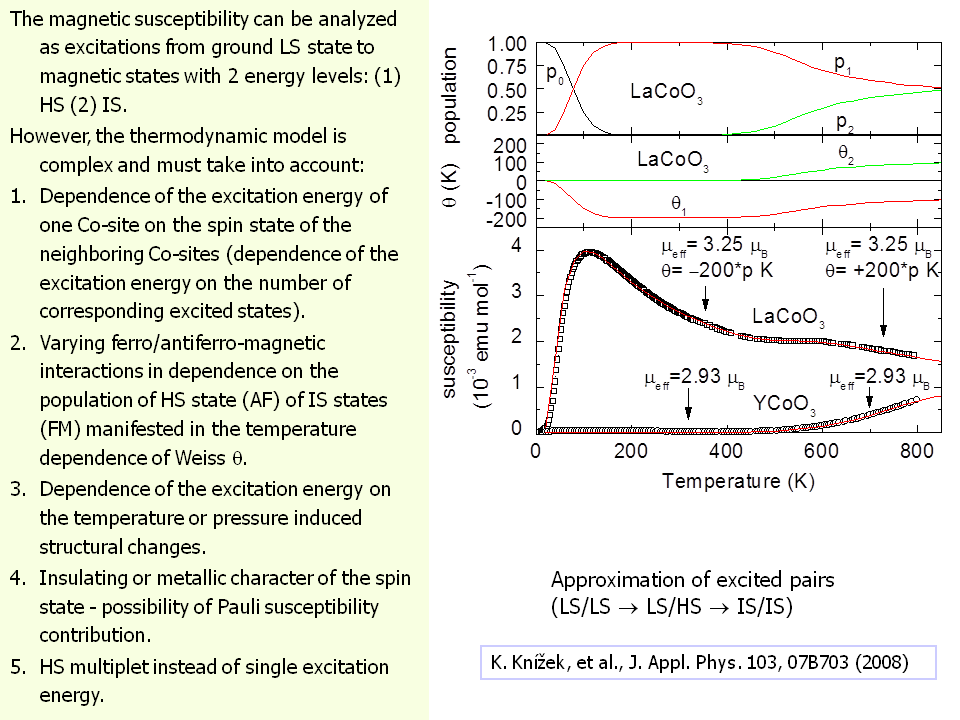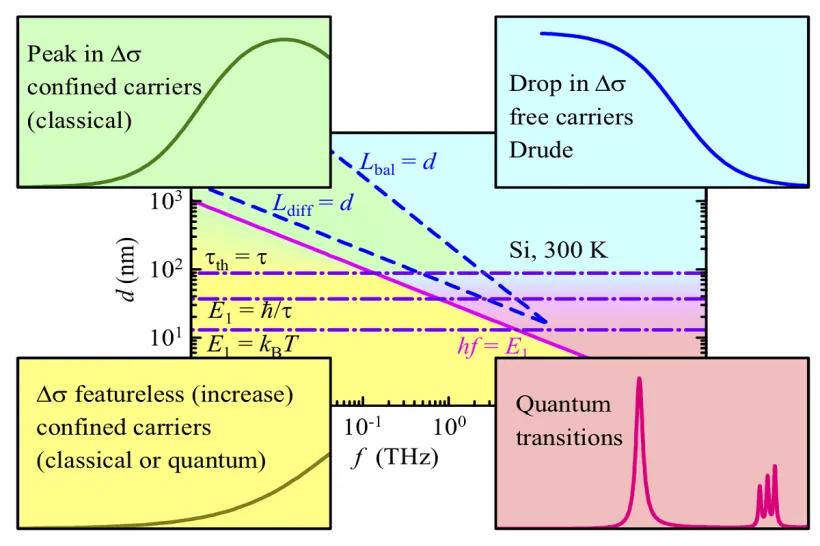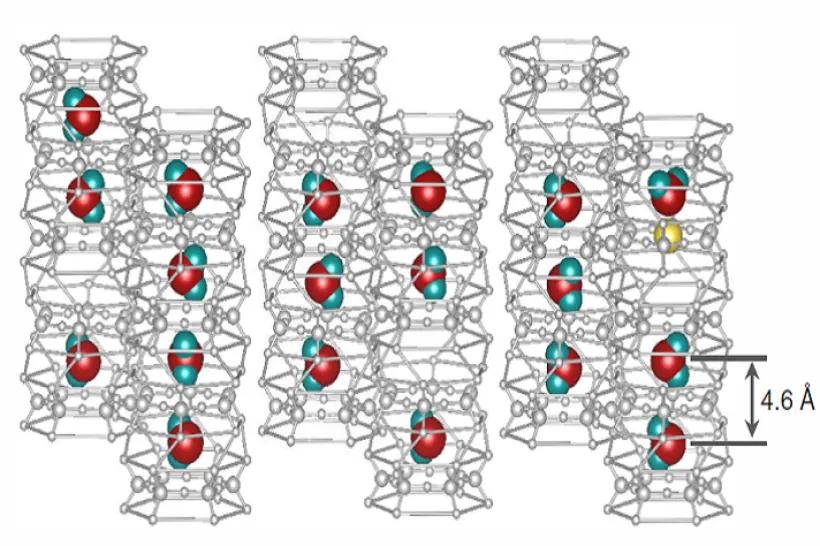Our published works complete experimental and theoretical research of perovskite cobaltites LnCoO3 (Ln = La, Y, rare earth). Systematic calculations of the stability of different Co3+ spin states in the perovskite structure have proved that the transition in LaCoO3 at T = 100 K consists of a local excitation from the LS ground state to the close-lying HS state, and pointed to a strong repulsion between neighboring HS states.
Starting point to an understanding of the second transition (insulator-metal) was refusal of the traditional idea of the high-temperature metallic phase as a mixture of IS and HS Co3+ states in about 1:1 ratio. Namely, the new analysis of magnetic susceptibility in LaCoO3 has showed that the metallic state is associated with a homogeneous phase with cobalt ions in intermediate-spin state (IS), which coexists with residual regions in the LS+HS mixture. Based on the electron structure calculations it was possible to relate the origin of the IS phase to a temperature activated electron exchange between the LS Co3+-HS Co3+ pairs. In important distinction to previous models, the present scenario of the two-level spin transition in LaCoO3, LS-LS/HS-IS, can be used also for other compounds LnCoO3, where the LS ground state is stabilized with decreasing size of Ln= Nd, Pr,...Dy, Y ions, and both transitions are shifted to higher temperatures, approach each other and merge finally.
The new model interprets the magnetic and electric behavior not only in the single-valent cobaltites LnCoO3, but also in the doped systems of a mixed Co3+/Co4+ or Co3+/Co2+ valency. The work done on hole- or electron-doped systems LaCo1-xMxO3 and DyCo1-xMxO3 (x = 0 - 0.05, M = Mg2+ and Ti4+) has shown that both kinds of carriers induce magnetic states on neighboring Co sites, originally in the diamagnetic LS Co3+ state. This forms a magnetic polaron of large total spin. Consistently with the above mentioned scenario, the polarons can be viewed as droplets of the IS phase that move in the background of the low-temperature LS or LS/HS phases of undoped LnCoO3 and are finally dissolved in the high-temperature homogeneous IS phase of the host.
Selected publications
- K. Knížek, J. Hejtmánek, M. Maryško, Z. Jirák, J. Buršík, Stabilization of the high-spin state of Co3+ in LaCo1-xRhxO3, Phys. Rev. B 85, 134401 (2012)
- K. Knížek, Z. Jirák, J. Hejtmánek, P. Novák, Transition from the diamagnetic insulator to ferromagnetic metal in La1-xSrxCoO3, J. Magn. Magn. Mater. 322, 1221 (2010)
- K. Knížek, J. Hejtmánek, Z. Jirák, P. Tomeš, P. Henry, G. André, Neutron diffraction and heat capacity studies of PrCoO3 and NdCoO3, Phys. Rev. B 79, 134103 (2009).
- K. Knížek, Z. Jirák, J. Hejtmánek, P. Novák, Wei Ku, GGA+U calculations of correlated spin excitations in LaCoO3, Phys. Rev. B 79, 014430 (2009).
- J. Hejtmánek, Z. Jirák, K. Knížek, M. Maryško, M. Veverka, C. Autret, Valence and spin states in perovskites LaCo0.95M0.05O3 (M = Mg, Ga, Ti), J. Magn. Magn. Mater. 320, e92 (2008).
- Z. Jirák, J. Hejtmánek, K. Knížek, M. Veverka, Electrical resistivity and thermopower measurements of the hole- and electron-doped cobaltites LnCoO3, Phys. Rev. B 78, 014432 (2008).
- K. Knížek, Z. Jirák, J. Hejtmánek, P. Henry, G. André, Structural anomalies, spin transitions and charge disproportionation in LnCoO3, J. Appl. Phys. 103, 07B703 (2008).
- K. Knížek, Z. Jirák, J. Hejtmánek, M. Veverka, M. Maryško, B. C. Hauback, H. Fjellvåg, Structure and physical properties of YCoO3 at temperatures up to 1000 K, Phys. Rev. B 73, 214443 (2006).
- K. Knížek, Z. Jirák, J. Hejtmánek, P. Novák, Character of the excited state of Co3+ ion in LaCoO3, J.Phys.-Condens. Matter. 18, 3285 (2006).
- K. Knížek, Z. Jirák, J. Hejtmánek, M. Veverka, M. Maryško, G. Maris, T. T. M. Palstra, Structural anomalies associated with the electronic and spin transitions in LnCoO3, Eur. Phys. J. B 47, 213 (2005).
| Fig.1. The fits of thermal expansion and the three contributions αlatt (...), αmag (___) and αIM (---) (Ref. [10]). |
 |
| Fig.2. Results of GGA+U electronic structure calculations |
 |
 |
 |



